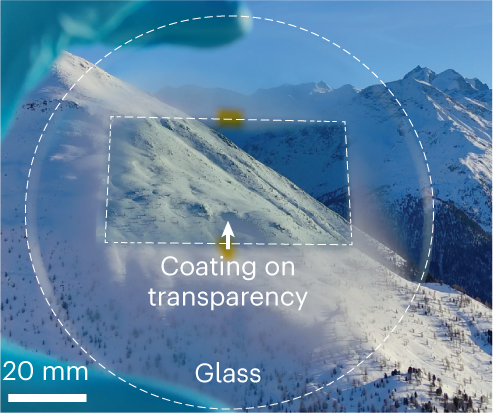
- Select a language for the TTS:
- UK English Female
- UK English Male
- US English Female
- US English Male
- Australian Female
- Australian Male
- Language selected: (auto detect) - EN
Play all audios:
On a freezing November morning, Ashraf Islam is 3,000 kilometres from his family in balmy Bangladesh, but the weather is far from his mind as he gushes about the science opportunities he has
encountered in Beijing. “We have good facilities at home, but the facilities here are nothing like what I’ve used before,” says Islam, who is working towards a PhD in China researching
techniques to remove organic matter from wastewater, an acute problem in Bangladesh. Htet Aung Phyo, a PhD student from Myanmar, is using his Chinese-funded fellowship in Beijing to develop
ways to use bacteria to extract copper from low-grade ore. If his project succeeds, it could help to extend the lives of copper mines in Myanmar, some of which are operated by a Chinese
company. A breakthrough would also mean more jobs in his own country. “This is why I am here,” he says proudly. Phyo and Islam are two of 1,300 graduate students from dozens of countries who
are spending up to four years in Beijing carrying out research to help solve scientific problems back home. Two hundred positions are funded each year by the Chinese Academy of Sciences
(CAS) in conjunction with The World Academy of Sciences (TWAS) in Trieste, Italy. But this is no ordinary fellowship scheme. Each of the 200 is a small part of the Belt and Road Initiative
(BRI), the world’s largest programme of loans and investments, including some grants, which China is brokering with 126 countries. Across much of the world, China’s government, companies and
local business partners have been building motorways, designing high-speed rail, mining fossil-fuel reserves, switching on power plants, installing thousands of surveillance cameras and
unveiling air and sea ports (see ‘Making connections’). This is all part of a vast venture conceived by President Xi Jinping to transform global trade networks that both supply China and
provide a market for its products. Xi and other Chinese leaders see science as a central element in building bridges with other countries and Bai Chunli, president of CAS, emphasized that
point last year in the _Bulletin of the Chinese Academy of Sciences_ (_CAS Bulletin_). “Science, technology and innovation are the core driving force for the BRI development,” he wrote. For
the past six months, _Nature_ has been travelling to countries participating in the BRI. From Beijing to Islamabad, Colombo to Nairobi to Lima, we are exploring in a series of five articles
over the next two weeks how China is transforming the world of science. China’s universities — along with a vast network of CAS institutes — are fanning out across the globe. They are
offering scientific assistance and signing collaborative agreements on a scale not seen since the United States and the former Soviet Union vied with each other to fund researchers in allied
nations during the cold war. On 19 April, Bai announced that CAS has invested more than 1.8 billion yuan (almost US$268 million) in science and technology projects as part of the BRI. In
Sri Lanka, China is co-funding a centre focused on safe drinking water and supporting investigations into a kidney-disease crisis in the country’s rural population. In Pakistan, it is
co-sponsoring a range of research centres that are studying topics from rice agriculture to artificial intelligence and railway engineering. In the heart of the European Union, a
Chinese–Belgian science park provides homes for companies trying to expand trade in medical devices, solar power and other technologies. And in South America, China has partnered with Chile
and Argentina on astronomical centres and has gained access to some of the best observatories in the world. In total, the scientific side of the BRI involves tens of thousands of researchers
and students, and hundreds of universities. There are few regions of the developing world where China’s scientific outreach does not have a footprint. This marks a profound shift in where
low- and middle-income countries are drawing scientific support — a sphere in which China is emerging as a competitor to the United States, Japan and the wealthier European nations. And as
China rises as a science-development superpower, it brings a different perspective from those of other leading science nations. First, there is the concept of win–win that pervades all BRI
projects, says Theresa Fallon, director of the Centre for Russia Europe Asia Studies in Brussels. Every major investment brings benefits not only to the host country but also to China, which
is hoping to gain both scientifically and economically from the ventures. Another difference is that China sees itself as a more appropriate partner for poorer nations because it still
recalls what it was like to be poor, says Li Yin, deputy director of CAS’s international cooperation department in Beijing. China’s approach through the BRI has earned it many fans in
countries where it has invested, including Sri Lanka’s President Maithripala Sirisena and Pakistan’s Prime Minister Imran Khan. Khan said in his victory speech last year that he’s keen to
learn how China went from being a poor country to an emerging superpower. But there’s another view of China’s scientific rise — the narrative that low- and middle-income countries are
sleepwalking into the arms of an authoritarian and neocolonial state, and that everything else, including technology agreements and research alliances, are part of that trajectory. In this
narrative, struggling nations are sagging under billions of dollars of debt to China and are giving away the keys to untold amounts of economically valuable and sensitive resources — from
oceanic-current readings to biological samples to next-generation communication systems. Another concern is that China is only now beginning to acknowledge the environmental harm that BRI
projects could cause as they pave routes through ecologically fragile habitats in Pakistan’s northern mountains and other regions, and dam up rivers across southeast Asia and South America.
From a science perspective, the overall goal of the BRI is clear — to restore China’s place as one of the world’s great civilizations, and that includes being seen by all other nations as a
source of scientific power, too. But Christopher Cullen, a historian of Chinese science at the Needham Institute in Cambridge, UK, says it is too early to say how China’s dealings with other
countries will evolve. MANY PATHS For well over 2,000 years, the silk roads linked the Far East to Europe, and Chinese leaders have been invoking the rhetoric of reviving these ancient
trade routes since the early 2000s. But when Xi became China’s president in 2013, he made this goal a priority as he launched the BRI with fanfare and ancient proverbs. “The sea is big
because it admits all rivers,” he said during launch events in Indonesia and Kazakhstan. The sea is even bigger than Xi’s plans originally indicated. Over the past six years, the BRI has
grown to incorporate a complex, global network of ocean and overland routes, with China as the focal point (see ‘Growing network’). The full scope of the BRI is impossible to judge, because
China’s government has never released a list of all the projects that are in the works or planned. But estimates of its size cover a wide range from $1 trillion to $8 trillion. As one
component of this massive initiative, China is creating what it calls a 21st Century Maritime Silk Road, a giant oceanic loop that links the country’s shipping to the nations bordering each
of the great oceans, including some in Africa and South America. Then there’s the Silk Road Economic Belt, a complicated network of six overland corridors that connect China to some of Asia
and Europe’s major cities through railways, roads and maritime paths. The signs of a scientific BRI emerged soon after Xi visited central Asia in September 2013. The following year, CAS
funded an upgrade to a 1-metre telescope at Uzbekistan’s Ulugh Beg Astronomical Institute. The improvement paved the way for the Uzbekistan institute to survey the northern sky in
collaboration with China’s Xinjiang Astronomical Observatory. Uzbekistan has no experience in telescope making, observatory director Shuhrat Ehgamberdiev told the _CAS Bulletin_, so the most
important technological part was done by China’s engineers. This was the beginning of much grander plans by CAS. The BRI’s scientific component is being masterminded by Bai. Trained in
China as an X-ray crystallographer, Bai worked with John Baldeschwieler at the California Institute of Technology in Pasadena in the mid-1980s on scanning tunnelling microscopy. Even early
in Bai’s career, it was clear he would go far, says Baldeschwieler, who remembers predicting that Bai would one day become president of CAS. During a visit to Beijing in 1995, Baldeschwieler
was amazed to find that Bai had arranged a meeting with China’s then-president Jiang Zemin. “We were picked up in a small bus and taken by police escort with flashing lights through
Tiananmen Square to the Great Hall of the People.” Young boys and girls were lining the stairs on a red carpet, he recalls. Under Bai, the science BRI has been running on three parallel
tracks. In China, CAS has established five centres of excellence at its institutes, and these host the 200 PhD students that the academy trains every year. Outside China, it has opened nine
research and training centres, in Africa, central Asia, South America and south and southeast Asia — often co-funded by their host countries. The China–Brazil Joint Laboratory for Space
Weather in São José dos Campos, for example, is monitoring space weather changes and developing forecast models. In Bangkok, the CAS Innovation Cooperation Center helps Thailand’s
universities and technology companies to work with Chinese counterparts, and at the same time gives China a foothold in the region. And then there are hundreds of individual collaborations
between CAS and universities in China and elsewhere. The third track is what CAS is calling the Digital Belt and Road, a platform for participating countries to share the data obtained as
part of their collaborative projects with each other and with China. These data include satellite images as well as quantitative data on natural hazards, water resources and cultural
heritage sites. To draw these and other activities together, CAS established a super committee of scientific research organizations in 2016. This network goes by the acronym ANSO, short for
Alliance of International Science Organizations in the Belt and Road Region. Its 37 members span the globe, stretching from the Russian Academy of Sciences to the University of Chile. The
United Nations Educational, Scientific and Cultural Organization in Paris is also a founding member. As part of its activities, ANSO plans to support and organize research in BRI countries
on sustainable development, including improving food security and reducing water scarcity. TROUBLE SPOTS As the infrastructure projects take off and China increases its scientific activities
overseas, concerns are starting to emerge over how it is carrying out its work. Much of the criticism comes from countries not currently involved in the BRI. India’s government, for
example, is angry that it has not been consulted about activities taking place in what it regards as its backyard, and more than once has warned Sri Lanka’s policymakers to scale back the
extent of their scientific cooperation with China. Another potential flashpoint is how China is building the information-technology infrastructure for the Digital Belt and Road. The United
States and some other countries have warned in particular about signing agreements with Chinese telecommunications giant Huawei to build the next generation 5G mobile communications network.
They say that this potentially gives the Chinese government surveillance opportunities, because Huawei is also providing BRI countries with surveillance tools — including facial recognition
technology. Huawei, however, strenuously denies that it has installed access routes in its equipment for unauthorized users, such as might be used by the Chinese government. One of the
strongest concerns in BRI countries is about the environmental impacts of the projects, which are transforming the landscape in dozens of nations. The conservation group WWF reports that the
main BRI connections between Asia and Europe cross through 1,739 areas that have been identified as important for biodiversity conservation, affecting 265 threatened species, including 81
endangered species such as the saiga antelope (_Saiga tatarica_), tigers (_Panthera tigris_) and giant pandas (_Ailuropoda melanoleuca_). One project that has environmentalists worried is a
planned 350-kilometre, $3.8-billion Hungary-to-Serbia railway. This has also attracted the attention of EU authorities and is still awaiting regulatory approval. In addition, China has not
ratified the Espoo Convention, which requires member states to assess the environmental and health impacts of development projects at an early stage. Pervez Hoodbhoy, a physicist at Forman
Christian College in Lahore, Pakistan, says that few — if any — of China’s scientific collaborations are evaluating the environmental impacts of BRI infrastructure projects. “There’s a real
lack of research on a regulatory framework for the BRI projects themselves and this leads to the rest of us having to make guesses as to what is happening and what the impacts might be,” he
says. “There needs to be research on these questions, too,” says Hoodbhoy. “Without environmental safeguards in place, there are risks of exacerbating environmental problems, putting
pressure on dwindling natural resources and displacing communities,” agrees Aban Marker Kabraji, Asia director at the International Union for Conservation of Nature (IUCN) in Bangkok. One
obstacle to environmental due diligence, says Qi Ye, director of the Brookings-Tsinghua Center for Public Policy in Beijing, is that institutions in both China and BRI countries are
reluctant to do anything that could slow construction. Chinese companies, he says, are often “operating in an environment where the local government or contracting party needs or wants quick
results”. Strategic environmental impact assessments take time to do properly, and can result in changes to original specifications — all of which can lead to projects being delayed. “That
is not a popular option,” says Qi. Another problem is that contracts can state that environmental impact assessments are the responsibility of the host country. But because poor countries
often have little monitoring or evaluation capacity for such assessments, construction projects sometimes go ahead without proper scrutiny, environmental advocates say. There are signs that
China is starting to address such concerns. China’s own conservation research organizations, such as the Dunhuang Academy, and environmental scientists including Ma Keping from CAS’s
Institute of Botany in Beijing, have been warning about the environmental impacts of its vast network of transcontinental routes for some years. RELATED ARTICLES Wang Xudong, the director of
the Dunhuang Academy, says his colleagues have mapped 130 World Heritage sites along the original silk routes, including parts of the BRI. “In China, development is forbidden near
archaeological sites, or surrounding areas.” Wang says. He adds that countries participating in the BRI should start to establish protected areas as China has done. “Foreign countries should
also avoid building roads or rail near earthquake epicentres or near heritage sites,” he says. The environmental concerns about the BRI are beginning to catch the attention of China’s top
leaders, too. The IUCN, whose president is China’s former vice-minister for education Zhang Xinsheng, has been commissioned to study the environmental impacts of BRI construction in two
countries: Sri Lanka and Pakistan. Research teams including Chinese government officials were in these nations conducting fieldwork in February — around the same time that _Nature_ was
visiting them. The expectation is that this study will have traction in China because it is being done at the request of the China Council for International Cooperation on Environment and
Development, a body of the world’s top environment specialists that reports to China’s government. And last week, China’s government convened a two-day forum — a first for the government —
in Beijing to discussing environmental concerns surrounding the BRI. The conclusions of the meeting are expected to feed into a conference of heads of governments of BRI countries, called
the Belt and Road Forum, which started on 25 April. The forum is being chaired by Xi, which means that environmental discussions have been propelled to the highest of high tables. Arthur
Hanson, chief international adviser to the China environment cooperation council, says that one ambition is to be able to persuade China’s leadership to make environmental- and social-impact
assessments essential elements in BRI projects, along with ensuring that there is public participation in decisions and open access to data. Andrew Small, a China scholar with the German
Marshall Fund, a think tank in Washington DC, says that, in his experience, China’s policymakers are highly sensitive to criticisms and will be keen to work to resolve them. As the BRI takes
shape, Small says, the Chinese government will look to work with more international organizations, including conservation groups and universities. LOOKING EAST As China increases its
scientific investments in BRI countries, it is shifting how researchers around much of the planet look to the future. China has emerged as the scientific partner of choice for a large swathe
of the developing world. Whereas previous generations of researchers in Africa, Asia and, to some extent, South America trained in Western countries and had their intellectual roots there,
the same cannot be said for the current generation (see ‘China’s collaborations’). Several of the older scientists who spoke to _Nature_ for this series of articles remarked that junior
colleagues — particularly those returning from China after PhD training or postdoctoral work — are now often lacking in Western scientific contacts. “As more young people go to China instead
of the US, the links they will have with Western countries will further weaken,” says Kamini Mendis, a malariologist from Sri Lanka formerly with the World Health Organization in Geneva,
Switzerland. But there is another side to this story: the prospect that China’s scientific encounters with other countries could, in a small way, start to change China, too. At a meeting in
Beijing last November with PhD students who had come from BRI countries around the world, _Nature_ asked whether any wished to extend their stay. Might they consider working and living in
China on a more permanent basis — just as their predecessors at home had done in Europe and North America? The room fell momentarily silent, until an academy official pointed out that the
students’ contracts stipulate that they must return home once their PhDs are complete. “We do not want to cause brain drain,” she emphasized. But she didn’t have the last word. One of the
academy’s principal investigators interjected. “Are you saying that if these students stay and work here, perhaps China will become a more multicultural society?” he asked. “That would not
be such a bad thing.”









